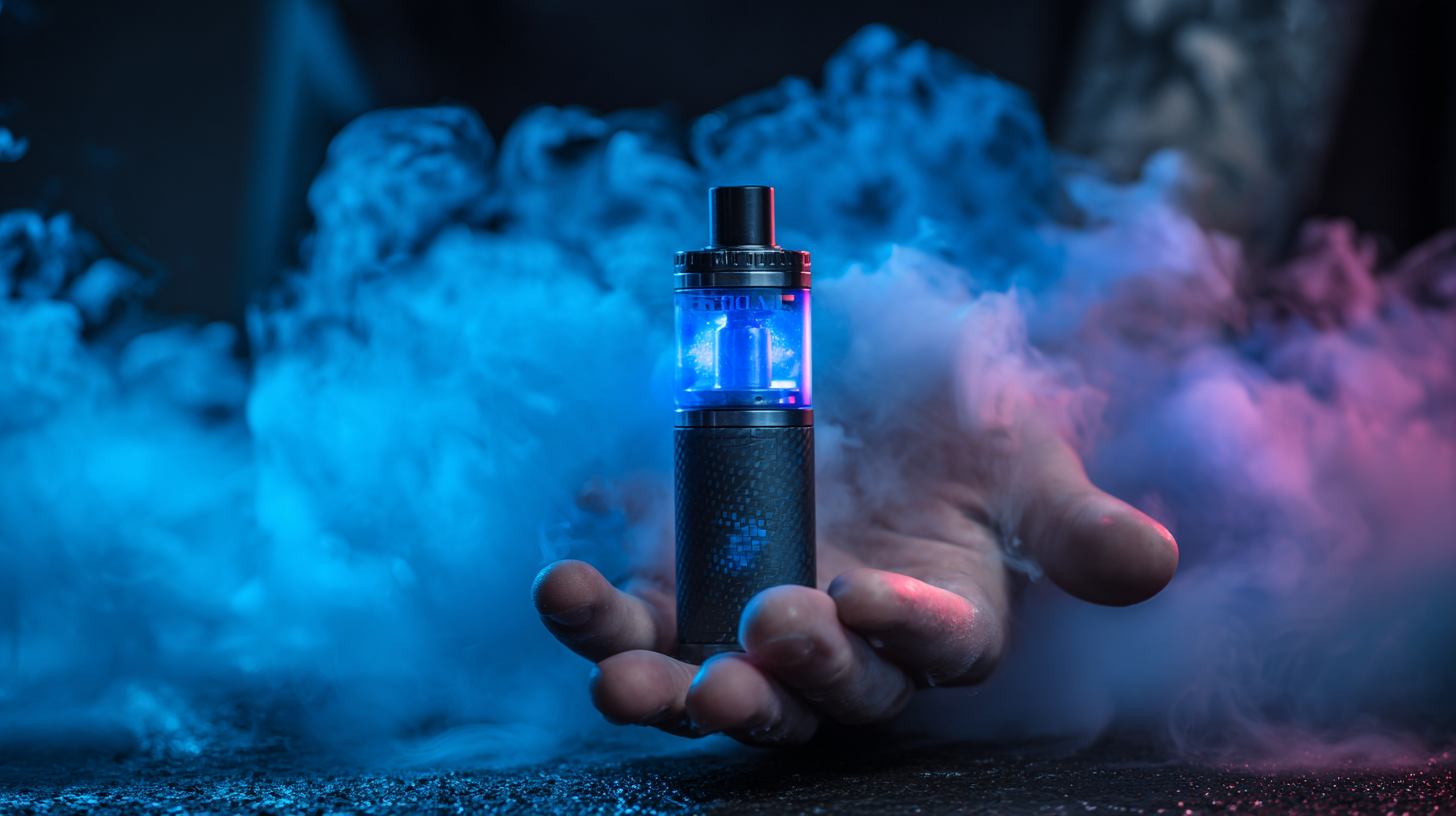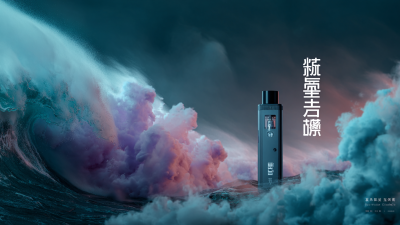The rise of Big Cloud Vape has transformed the vaping landscape, captivating enthusiasts and researchers alike with its impressive vapor production and complex flavor profiles. According to a report by Grand View Research, the global vaping market is projected to reach $57.7 billion by 2027, driven in part by the increasing popularity of sub-ohm devices that facilitate larger vapor clouds. These clouds are not just for show; they are intricately linked to the science of vaporization, involving factors such as temperature, coil resistance, and the properties of e-liquids. Recent studies suggest that the density and composition of vape clouds can significantly influence the perception of flavor, making the pursuit of the perfect Big Cloud Vape not just a quest for volume but also for an enhanced sensory experience. As the industry continues to innovate, understanding the science behind these vapor clouds will be crucial for both manufacturers and consumers aiming to enhance their vaping experience.

The composition of vapor plays a crucial role in the density and quality of vape clouds. When a user exhales vapor, the visible cloud is primarily made up of propylene glycol (PG) and vegetable glycerin (VG), the two most common base liquids used in e-liquids. VG is particularly known for its thicker consistency and higher viscosity, which contributes to the production of denser clouds. In contrast, PG is known for its throat hit and flavor retention, but it produces thinner vapor. The balance between these two components can significantly affect the density and overall experience of the vape.
Additionally, flavoring agents added to e-liquids further influence vapor production. These compounds not only enhance the taste but can also alter the physical properties of the vapor, affecting how it disperses in the air. For instance, certain flavorings can increase the vapor's thickness or change its behavior when exhaled. This interplay between vapor composition and flavor profile is essential for creating an enjoyable vaping experience, as users often seek a combination of rich flavor and substantial cloud production. Understanding these elements helps vapers select the right e-liquids to achieve their desired clouds and flavors.
The science of vaping has gained significant attention, particularly in how temperature control influences cloud production and flavor intensity. When it comes to vape devices, the ability to regulate temperature plays a crucial role in the vaping experience. Higher temperatures tend to produce thicker vapor clouds, as the increased heat facilitates the transformation of e-liquid into vapor. However, excessive heat can lead to the breakdown of the e-liquid's ingredients, diminishing flavor quality and even introducing unwanted byproducts.
Conversely, lower temperatures can enhance flavor by preserving the integrity of the e-liquid's components. This results in a more nuanced tasting experience, as the subtler notes of the flavor blend are more pronounced. It's essential for vapers to find a balance between cloud size and flavor profile, and this is achieved through understanding their device's temperature settings. By experimenting with different temperatures, vapers can customize their experience, ensuring that their clouds are not only visually appealing but also rich in flavor.

When it comes to maximizing vapor clouds, the choice of e-liquid plays a crucial role in both the density and quality of the clouds produced. According to a report from the International Journal of Environmental Research and Public Health, e-liquids with a higher vegetable glycerin (VG) concentration can significantly enhance cloud production. VG is known for its syrupy consistency and ability to create denser vapor, which is why many cloud chasers prefer e-liquids with a VG ratio of 70% or higher. This formulation not only impacts the vapor output but also affects the throat hit and flavor profile.
In addition to VG content, the nicotine level in e-liquids can also influence vapor density. A study published by Tobacco Control indicated that lower nicotine levels often allow for larger vapor production, as users can inhale more readily without the harshness associated with higher concentrations. It is recommended for those looking to maximize their vapor clouds to select e-liquids with lower nicotine levels while ensuring an appropriate VG/PG (propylene glycol) balance to maintain flavor integrity. By carefully choosing the right e-liquid composition, users can enjoy both significant vapor output and a rich, flavorful experience.
When it comes to vaping, the coil setup plays a pivotal role in enhancing vapor output and flavor. Industry reports indicate that a well-optimized coil can significantly increase vapor production—sometimes by as much as 30%. This improvement is primarily attributed to the coil's resistance and material, which directly impact heat generation and efficiency. For example, using a mesh coil instead of a traditional wire coil can provide a larger surface area for heating, resulting in denser vapor and improved flavor retention.

Tip: Utilize the right wire gauge for your coil. A lower gauge (like 24 or 26) typically offers better vapor production due to lower resistance, allowing more power to pass through, while higher gauge wires (like 30) may yield a cooler vape but can enhance flavor clarity.
In addition to choosing the right wire, the method of wicking can also make a difference. Properly saturated cotton or organic wicking materials can aid in maintaining consistent vapor output and prevent dry hits, which can spoil your experience. According to studies, vapers often report a 40% improvement in flavor when using high-quality wicking materials that allow for better juice absorption.
Tip: Experiment with different wicking techniques, such as the "Tuck and Roll" method, to find the optimal balance between vapor production and flavor experience.
The ratio of propylene glycol (PG) to vegetable glycerin (VG) is a crucial factor influencing both the density of vape clouds and the flavor experience. PG is known for its thinner consistency and ability to produce a throat hit similar to traditional tobacco smoking. It also acts as an excellent flavor carrier, enhancing the overall taste of e-liquids. However, due to its lower vapor production, vapers seeking thick clouds typically opt for a higher VG content.
On the other hand, vegetable glycerin is thicker and produces denser, smoother vapor. With a higher VG ratio, vapers can achieve the large, fluffy clouds that many seek. While VG lacks some of the flavor-enhancing characteristics of PG, it contributes to a sweeter taste profile and a softer inhale. Striking the right balance between these two components allows vapers to customize their experience, making it possible to enjoy both robust flavors and significant cloud production, catering to individual preferences in the vaping community.
| PG/VG Ratio | Cloud Density | Flavor Intensity | Throat Hit |
|---|---|---|---|
| 50/50 | Medium | Balanced | Smooth |
| 30/70 | High | Strong | Harsh |
| 70/30 | Very High | Rich | Mild |
| 80/20 | Max | Intense | Very Smooth |
| 100/0 | Low | Light | None |






